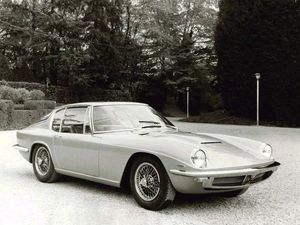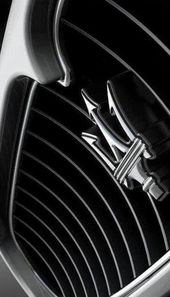.
Maserati Mistral: Difference between revisions
Red marquis (talk | contribs) No edit summary |
Red marquis (talk | contribs) No edit summary |
||
| Line 29: | Line 29: | ||
|- | |- | ||
! style="background-color: #ccccff;" | Wheelbase | ! style="background-color: #ccccff;" | Wheelbase | ||
| 2400 mm | | 94.48 in (2400 mm) | ||
|- | |- | ||
! style="background-color: #ccccff;" | Weight | ! style="background-color: #ccccff;" | Weight | ||
Revision as of 01:57, 15 December 2006
| Maserati Mistral | |
|---|---|

| |
| Manufacturer | Maserati |
| aka | Maserati Tipo 109 4000 GT "Due Posti" |
| Production | 1963-1970 |
| Class | Gran Turismo |
| Body style | 2-seat front-engined GT Coupe and Spyder |
| Length | |
| Width | |
| Height | |
| Wheelbase | 94.48 in (2400 mm) |
| Weight | 1200kg (dry) |
| Transmission | ZF 5-speed and reverse |
| Engine | 3.7 - 4.0 litre (3694.4cc-4012.2cc) Inline-Six |
| Power | 245 bhp @ 5500 rpm (255 bhp @ 5200 rpm) |
| Similar | Aston Martin DB4 Ferrari 250 GTE AC 428 Maserati 350S |
| Designer | Pietro Frua of Frua |
The Maserati Mistral, named after a cold northerly wind of southern France, was the successor to the iconic 3500 GT. It was the first in a series a classic Maseratis to be given the name of a wind and the last model from the "Casa del Tridente" to be equipped with a straight six cylinder engine before Maserati moved on to V8 engines for their production cars.
It was designed by Pietro Frua and was first shown in a preview at the Salone Internazionale dell'Automobile di Torino in November 1963. It is generally considered as one of the most beautiful Maseratis of all time.
The engine was a direct descendent of the 6-cylinder unit mounted in the Tipo 350 S sports racer and boasted a close relationship with the engine that powered the Tipo 250F F1 single-seater, driven by Juan Manuel Fangio, to Maserati's one and only F1 World Championship in 1957.

